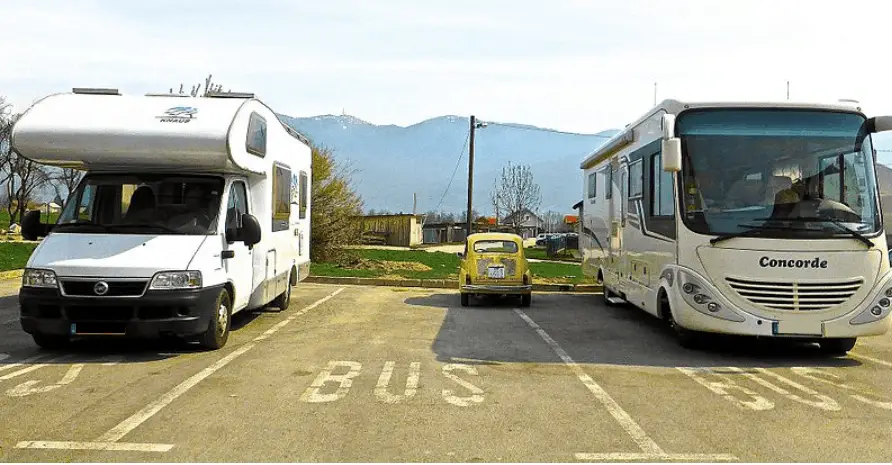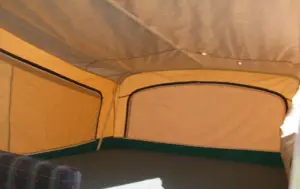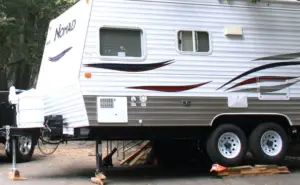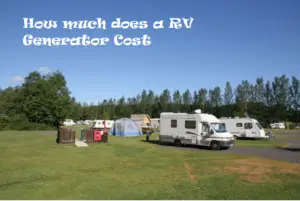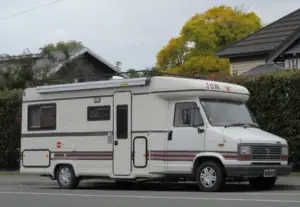Many people are unaware that there are three distinct types of motorhome available; Class A, B, and C. Those who are aware of the three types of motorhome will struggle to find information online about the difference between different motorhomes. I had a look. Most of the information out there isn’t that good.
In this article, I am going to walk you through the difference between different types of motorhomes. I am not going to run you through all of them individually, though. Instead, I am going to walk you through each of the types of things you may be on the lookout for in an RV. This way you will be able to decide which class is going to be perfect for you.
The Three Types of Motorhomes
Before I dive into the difference between different motorhomes. it is worth giving a brief overview of the types of motorhome available, They can (broadly) be split into three categories:
Class A Motorhome
this is the most amazing RV that money can buy…but they can reach prices of a few hundred thousand dollars. These are so comfortable. In fact, some of the largest Class A motorhomes on the market are going to be akin to a house in terms of amenities. If you stay in one of these, then you are going to have a whopping amount of space available.
Class C Motorhome
When people think of motorhomes, they tend to think of the Class C motorhome. This is your typical RV, and I am sure that you would be able to recognize the shape if you saw one of them on the road.
Class B Motorhome
These are not that popular as motorhomes. Well, at least for those who are planning to stay in them for long periods of time. Class B motorhomes tend to look very similar to vans. You don’t have a lot of space in them, and space is limited. They are great for a few days on the road, but most people will bring a tent along with them. This is going to provide a lot more space.
Average Length
Class A motorhomes are going to be considerably larger than Class B and Class C motorhomes.Class A motorhomes can reach a whopping 45-feet in length (and some may be longer than this), whereas a Class C may cap out at about 35-feet, with most of them being a lot smaller than this. It may not seem like a lot, but that extra 10-feet really adds a huge amount of space to the vehicle.
Class B motorhomes are often not going to be that much larger than your typical van. As I said; they aren’t really built for long-term use. The amount of space in them is fairly cramped, but more on that in a short while.
In addition to this, you will find that class A motorhomes are a bit wider than the other two. It may only be by a couple of feet but, once again, it is going to add a huge amount of space to the vehicle. I will talk more about this when I discuss amenities, however.
Average people they sleep
Class A motorhomes easily have the ability to sleep up to 10 people. Most of these people are going to be able to fit pretty comfortably too.
With some of the biggest Class A motorhomes, there will be enough space that you could have ten people sleeping in there without anybody sleeping on the floor. Of course, these motorhomes are probably going to be a lot more expensive than your typical motorhome. As you will discover in a short while; the price of these vehicles will often be akin to the price of a small home.
A Class C motorhome can probably sleep up to 8-people, depending on the size. However, the most typical size of Class C motorhome is probably going to be able to sleep somewhere up to 4-6 people.
This is assuming that everybody is sleeping comfortably in the RV. You may be able to fit some people on the floor, but the lack of floor space in the smaller RVs means that this is probably going to be a bit of an issue.
Class B motorhomes are probably going to be able to sleep 1 or 2 people at a push. If you are a couple with a baby, then you may be able to squeeze the baby in, but it is going to be somewhat of a tight squeeze. Most Class B motorhomes will not have a proper bed in them. This means that if you have ore than two people in the motorhome, it is going to be incredibly uncomfortable in it.
Average price
If you are planning to buy a Class A motorhome, it is going to be on the expensive side. For the most basic of basic Class A motorhomes, you are going to be spending at least $50,000 brand new. However, the price can easily go all the way up to $500,000. In fact, there are some on the market which can cost a lot more than this. As I said; these are going to be the price of a small house. They are pretty much going to be the domain of the richest people out there.
A decent Class B motorhome is going to start at about $40,000 in price, with a maximum price of about $80,000. You probably can find new Class B motorhomes at a lower price than this, but they tend to be sorely lacking in even the most basic of amenities, which means that they are not going to be great for longer-term travel (not that a Class B motorhome is going to be good for longer-term travel as it is)
Class C motorhomes are going to start at about $50,000 in price. The ‘main’ upper limit will be about $100,000. There are some Class C motorhomes on the market which are bordering on $250,000 in price. However, if you are planning to spend this amount on a motorhome, then you may as well go for a Class A instead.
Obviously; all of these motorhomes can be obtained at a far cheaper price if you are buying them used. However, you will need to do your research to make sure that you are buying something of a high-quality there. That being said; a lot of people do get rid of their RVs when they have only used them a couple of times. Most of the used RVs on the market have barely been used.
Amenities
Class A motorhomes are going to be like a house on wheels. There will often be multiple rooms in them. If there is a bed (or two), then there may be full-sized beds. No corners cut. There will be a dedicated bathroom, with a full shower.
There will also be a fully equipped kitchen. Some of the best Class A motorhomes on the market will be lavishly furnished. With the amount of equipment in one of these, you will often forget that you are traveling in an RV.
Class B motorhomes will have very little in the way of amenities. You may have a small stove in them, but most of the Class B RVs will require you to cook outside.
It is unlikely that there will be a dedicated way to hook up an electrical or water inlet into the vehicle. At the most, you are probably going to have a small bed in an extendable roof you can sleep in, and maybe a small sofa. Class B motorhomes are not really known for their comfort.
Class C motorhomes are going to be smaller versions of Class A. Basically, take everything that I talked about with the Class A motorhome and imagine it smaller. You may need to trim out a bed or two (some Class C motorhomes do not have beds), but you should still be fairly comfortable in one. There may be a small fridge and cooker you can use. It won’t be like a home, but life on the road should be fine.
Talking about RV amenities did you know about various amenities you can use from RV parks and save?
Driving comparisons
As you may have guessed; driving a Class B motorhome is probably not going to be that much different to driving a van on the road. Sure, it feels ‘heavy’, but if you are able to drive a car, then you should probably be able to handle a Class B motorhome. The same goes for a class C motorhome (Find here some tips to drive class c rv, its surprising how one can master the RV driving following some basic steps.)
On the other hand, a Class A motorhome is akin to the size of a bus (in some cases), which means that it can be dreadfully difficult to control if you don’t know what you are doing. It can be exceedingly heavy.
Some countries may even require you to have a separate license if you want to drive one of these on the roads. If you do not need a separate license in your country, it is still worth doing a course or something like that. People really do underestimate how expensive one of these pieces of kit actually is.
Car towing capabilities
When it comes to towing capabilities, there is really little difference between different motorhomes here. However, you will find that class A and class C motorhomes are probably going to have an easier time towing a vehicle.
Honestly; if you are driving a Class B motorhome, then you probably do not want to be towing a car with it at all. It doesn’t really have the power to pull something that heavy. That being said; the small size of a Class B motorhome means that you probably do not need to bring a car along with you at all. The Class B motorhome is compact enough that you can really just drive anywhere with it without any real issues.
Insurance cost
The more expensive the motorhome, the higher the insurance cost will be. Each RV type has a different insurance costs. I was surprised to see the difference and how it varies. Here is an article that i wrote few days ago that takes you through all the details of rv insurance cost.
Class B motorhomes will have insurance prices that are closer to that of a car. However, a Class A motorhome may have insurance prices that are over $4,000 per year. Although let’s be honest, if you are able to shell out the price of a Class A motorhome, an insurance cost of $4,000 per year is going to be fairly negligible.
Maintenance
The maintenance on each of these RVs will be pretty much the same. As long as you are buying a quality RV (and I suggest that you always stick to the big brands), then you should find it easy to obtain parts. Everything should be pretty well-built too.
That being said; with the larger RVs (i.e. Class A and Class C), you are going to have a vehicle that can be tough to find a mechanic to work on it for you. Obviously, if you have a Class A RV, you can’t exactly drive it to the closest garage. You will need to call in a specialist to work on it. It is unlikely that you are going to be able to do the work on your own. They are complicated pieces of kit. However, as I said; it is rare that they are going to be breaking down.
If you have a Class B motorhome, then it may actually be a bit easier to get them fixed. This is because you can take them to your standard garage, and the vast majority of them have standard car parts. This means the mechanic will probably have some idea about what they are doing, even if they have not encountered that particular type of RV before.
Full time living in an RV
If you want to live fulltime in an RV, then you would struggle to find anything more comfortable than a Class A motorhome. Of course, it is going to come at a hefty cost. As I said; a lot of them are going to be very similar in price to a home. However, for the highest level of comfort, you won’t get anything better.
That being said, it is likely that a Class C motorhome is probably going to be more to most people’s budgets. It is affordable, and the insurance costs are not going to go through the roof. Sure, it probably couldn’t fit more than a few people who want to live on the road, but for most people, this is going to be more than enough. If you have a larger family (i.e. a few older children), then it is probably going to be a tight squeeze, but it could work.
Other RV Types
In case you do not find the 3 motorhomes of your type then you have other options as well.
- Travel Trailers
- Fifth wheels
- Pop up or tent trailers
- Camper vans conversions
- Truck camper
These are some of the common types of RVs apart from motorhomes.

